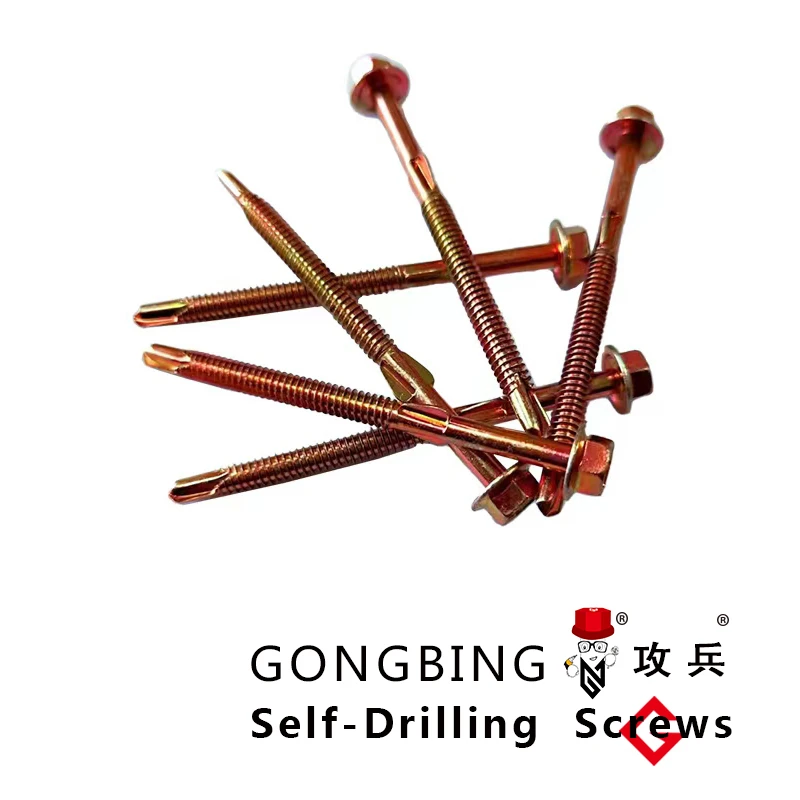butterfly screws for drywall
Understanding Butterfly Screws for Drywall
When it comes to construction and DIY projects, the right fasteners can make all the difference in achieving a sturdy and lasting finish. Among the various types of screws available, butterfly screws have gained popularity for their unique design and functionality, particularly in the context of drywall installation. This article delves into the key aspects of butterfly screws, their advantages, and their applications in drywall projects.
What Are Butterfly Screws?
Butterfly screws, often referred to as toggle bolts, are specialized fasteners designed to secure objects to hollow walls and ceilings, particularly those made of drywall. The unique feature of butterfly screws is their expansion mechanism. Unlike traditional screws that grip the material directly, butterfly screws consist of a threaded screw combined with a pair of wings or a butterfly mechanism. When inserted into a hole, the wings open up behind the drywall, distributing the weight of the mounted object and providing a secure hold.
How Butterfly Screws Work
The installation of a butterfly screw is straightforward. First, a pilot hole is drilled into the drywall. The butterfly screw is then inserted into this hole while the wings are folded against the screw shaft. As the screw is pushed in or turned, the wings expand outward, ensuring a firm grip against the back of the drywall. This unique design allows butterfly screws to support heavier loads compared to standard screws, making them ideal for hanging items like mirrors, shelves, and cabinets.
Advantages of Using Butterfly Screws
1. Strong Load-Bearing Capacity One of the primary benefits of butterfly screws is their ability to hold substantial weight. The expanded wings create a larger surface area against the drywall, which helps to distribute the load evenly and securely.
2. Versatility Butterfly screws can be used in various applications, from mounting heavy picture frames to supporting kitchen cabinets. Their capability to anchor into hollow walls makes them versatile for different construction projects.
butterfly screws for drywall

3. Easy to Install and Remove Installation typically requires minimal tools, often just a drill. Also, when it's time to remove the fixture, butterfly screws can be undone without causing significant damage to the drywall, especially if installed carefully.
4. Minimal Wall Damage Because they are designed for drywall, butterfly screws are less likely to cause crumbling or cracking compared to using larger, traditional anchors.
5. Cost-Effective Butterfly screws are usually affordable, making them a budget-friendly option for both professional contractors and DIY enthusiasts.
Common Applications
Butterfly screws are particularly well-suited for several applications
- Hanging Shelves When installing floating shelves in drywall, butterfly screws can support the weight of books and decorative items. - Mounting Electronics TVs and sound systems can be securely mounted to walls with the help of butterfly screws, ensuring safety and stability. - Fixing Cabinets For kitchen or bathroom installations, butterfly screws provide the strength needed to hold cabinets firmly in place. - Decorative Fixtures Lighting, mirrors, and wall art can be attached securely using butterfly screws, enhancing the aesthetic appeal without compromising safety.
Conclusion
Butterfly screws are an invaluable tool in any contractor’s or DIY enthusiast’s toolkit. Their ability to secure heavy items to drywall with minimal damage and their ease of installation make them a preferred choice for various applications. Whether you're hanging a picture frame, mounting a shelf, or installing a flat-screen TV, understanding how to use butterfly screws effectively can lead to successful and sturdy installations. As with any fastener, using the right type for the job ensures that renovations and constructions are not only durable but also safe, providing peace of mind for years to come.
-
Weatherproof Plastic Expansion Anchors for OutdoorNewsJun.06,2025
-
Sustainability in the Supply Chain: Eco-Friendly TEK Screws ProductionNewsJun.06,2025
-
Load-Bearing Capacity of External Insulation FixingsNewsJun.06,2025
-
Double Head Bolts: Enhancing Efficiency in Industrial MachineryNewsJun.06,2025
-
Corrosion Resistance in Chipboard Screws: Coatings for Wholesale DurabilityNewsJun.06,2025
-
Butterfly Toggle Bolts : Enhancing Structural ResilienceNewsJun.06,2025
